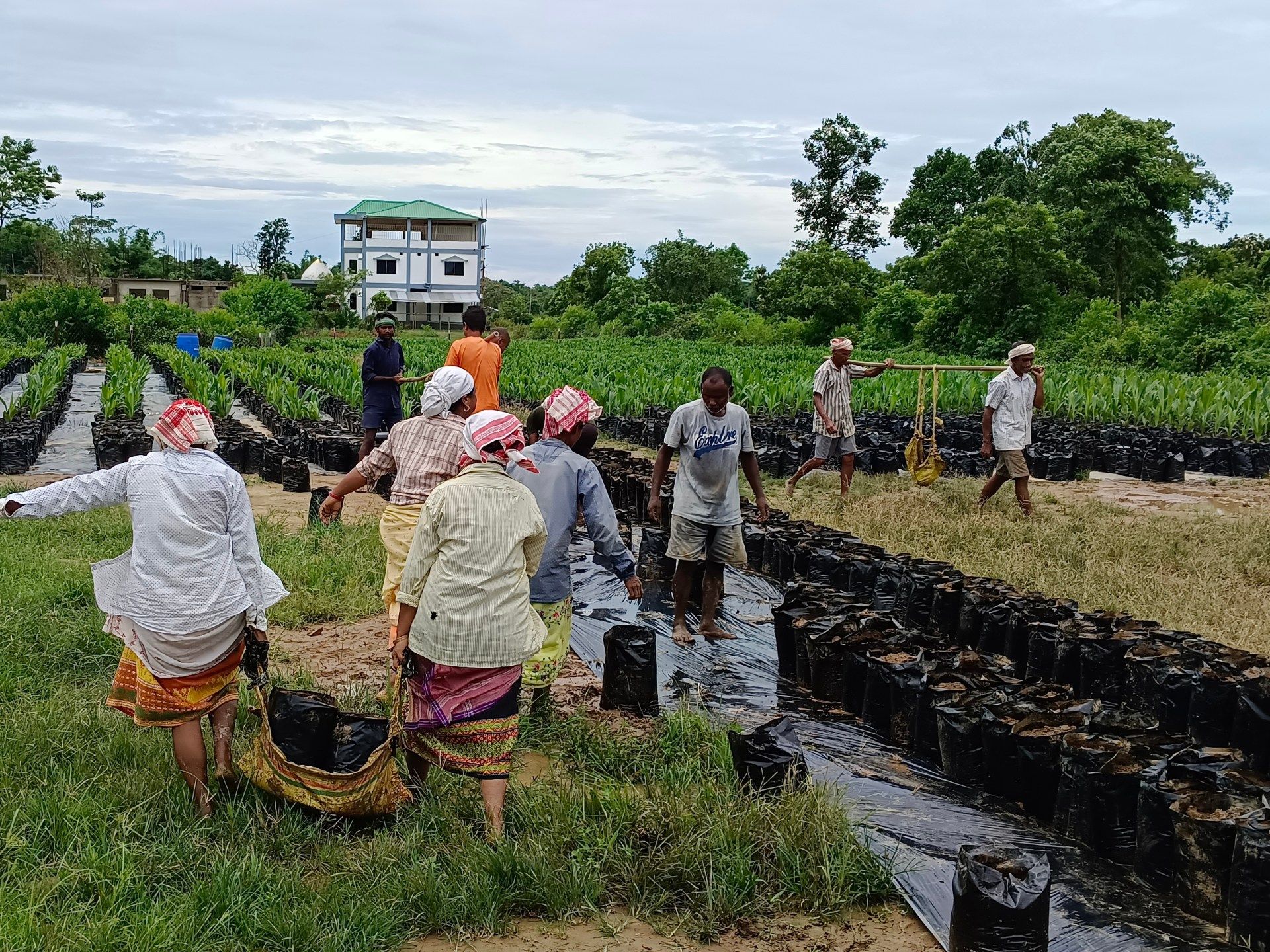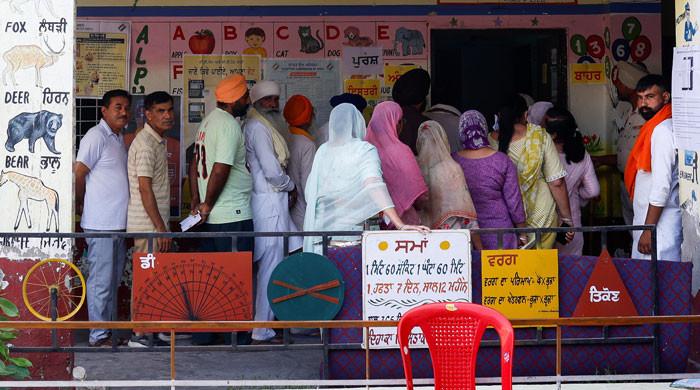Jorhat, India: Priya Ram Duwarah has planted 60 oil palm saplings on her half a hectare (1.2 acres) of farmland in Mohara village in Jorhat district of Assam state in northeastern India.
The 65-year-old farmer, who normally grows rice and seasonal vegetables, took up oil palm plantation last September after state agriculture department officials assured him he would reap huge profits. Although the plants take four years to bear fruit, he says the wait is worth it.
Reason: the promise of higher returns.
Duwarah told Al Jazeera that rice farming brings him about 40,000 rupees ($478) a year, a sum that is “too insignificant” in the face of rising inflation. “Government officials assured me that they would double my income,” as the region has favourable climatic conditions for oil palm and Duwarah decided to venture into the business, he told Al Jazeera, sounding enthusiastic about his new crop.
He is one of about 1,200 farmers in Assam who have started cultivating oil palm with the dream of improving their income.
Huge demand for edible oils
In 2014, the newly elected Narendra Modi government created the National Mission on Oilseeds and Palm Oil (NMOOP) with the aim of making India self-sufficient in edible oils. In 2021, its name was changed to the National Mission on Edible Oils-Palm Oil and the government announced an investment of Rs 110.4 billion ($1.32 billion).
India is the world’s largest importer of edible oils. In the 12 months from November 2022 to October 2023, it imported 16.47 million tonnes of edible oil, including 10 million tonnes of palm oil. This is up from the previous year’s imports of 14.19 million tonnes and 8 million tonnes, respectively. Palm oil is used in a variety of packaged foods as well as soaps, cosmetics, ice creams and other products.
Although oil palm cultivation was already taking place in some southern Indian states including Andhra Pradesh, Telangana, Tamil Nadu, Odisha and Karnataka, the Modi government has decided to expand production to the northeastern region of the country, including Assam.
Initially, Assam had allocated about 1,000 hectares (2,741 acres) of agricultural land for oil palm cultivation, but due to its immense potential, in 2014 the Indian Oil Palm Research Institute identified a total area of 375,428 hectares (927,703 acres) suitable for agriculture.
However, despite the obvious demand for palm oil and a decade of efforts, things have not gone as expected in Assam. One of the main problems is that there are still no processing facilities in the state and the fruit is processed in the neighbouring states of Mizoram and Andhra Pradesh. The delays in that process and the resulting losses have discouraged farmers who were early adopters of the practice.
'Frustrated hopes'
Josmi Rabha, 54, a farmer from Dariduri village in Goalpara district, is one of them. In 2016, she planted 65 oil palm saplings on about one hectare (2.5 acres) of her farm with the promise of huge returns.
“I spent around [100,000 rupees] ($1,200) to install a fence to keep animals out and also installed a pump for irrigation with groundwater,” although that increased his water bill, Josmi told Al Jazeera.
“The plants started bearing fruit in 2021. We were expecting to make huge profits, but all our hopes were dashed when we did not find any market to sell them because no one came to buy from us,” Josmi said.
The fruit starts rotting if it is not processed within three days and middlemen, aware of this dilemma, offered them low prices, he recalled. “The absence of an oil processing plant in Assam has virtually wiped out our business,” he said, adding that he is now having trouble raising funds to remove the plants from his land.

Rabha's son, Debajyoti Rabha, 34, a teacher at a local school, also took up the business to supplement his family's income, but was devastated by the outcome.
“Oil palm is a water-intensive crop and has wiped out all other crops,” which he had intercropped with oil palm following the suggestion of government officials, Debyajyoti said. “We are planning to clear the oil palm crop from our fields, but the branches and stems are tough and we will have to hire more labour to do so. This has been a loss-making business for us,” he added.
While 70 farmers in the village had previously signed up to the idea of growing oil palm, now only 10 remain because everyone else has given up, he said.
Pratul Chandra Rabha, 40, another farmer from the same village, also blamed the low prices offered for farmers losing interest in farming.
There is no minimum support price (MSP) from the government and middlemen have offered them six rupees ($0.072) per kg of fruit, much lower than the asking price of 15-16 rupees ($0.19) per kg.
“Each tree produces between 15 and 20 kg. [33-35 pounds] “I have bought fruit within 20 days, but where are the buyers? I am no longer serious about palm cultivation and have almost given up,” Rabha told Al Jazeera.
Dipak Kumar Pathak, deputy director of the Goalpara agriculture department, acknowledged the decline in farmer participation and the plantation area which had been halved from 1,511 hectares (3,734 acres) in 2014 to 700–800 hectares (1,730–1,977 acres).
“Lack of proper transportation of crops to processing units and involvement of middlemen seem to be the main reason behind the setback,” Pathak said.
New players
Last August, Assam Chief Minister Hemanta Biswa Sarma announced that the state government, in partnership with yoga guru Baba Ramdev’s Patanjali Foods Limited (PFL), had initiated a large-scale oil palm plantation project to cultivate 375,000 hectares (927,000 acres) of land, of which Patanjali will work on 60,300 hectares (149,005 acres). Some of the other companies that have shown interest include 3F, Godrej Agrovet and KE Cultivation Pvt Limited.

As part of that plan, PFL is growing palm oil seedlings in 10 of the state's 19 nurseries, which it distributes free of charge to farmers.
Mitu Baishyea, PFL nursery manager in Jorhat district, told Al Jazeera that they have already distributed 40,000 seedlings to 400 farmers in six districts since last September.
“Our nursery is producing [200,000] “PFL produces palm seedlings annually and we have the capacity to double that number. The seedlings are delivered to farmers free of charge and they are also provided with technical guidance,” he said. The seedlings receive significant state subsidies and PFL hopes to make a profit when it sells the ready-to-use palm oil.
PFL has also said it will set up two factories to process palm fruit into oil once it sees there are enough suppliers.
Neelom Baruah, a field officer of PFL, said the company has distributed mustard and millets to farmers to encourage intercropping so that they do not suffer losses during the gestation period of palm oil. “We are distributing free seedlings to farmers and the problem of market linkage will be solved once production starts in large quantities as it is not feasible to set up the processing unit now.”
On a recent day, when farmer Duwarah, who is still excited about the prospects of high incomes from oil palm cultivation, returned to his mud hut, he said he was not worried about the negative experiences of the Goalpara farmers who went into the business before him.
Their crops are affected by water problems due to scarcity of rains in Goalpara, he said. “We have no problems here and PFL has assured us that we will double our income when the trees start bearing fruits. We are hopeful of getting better profits,” he said.












